ASWAN
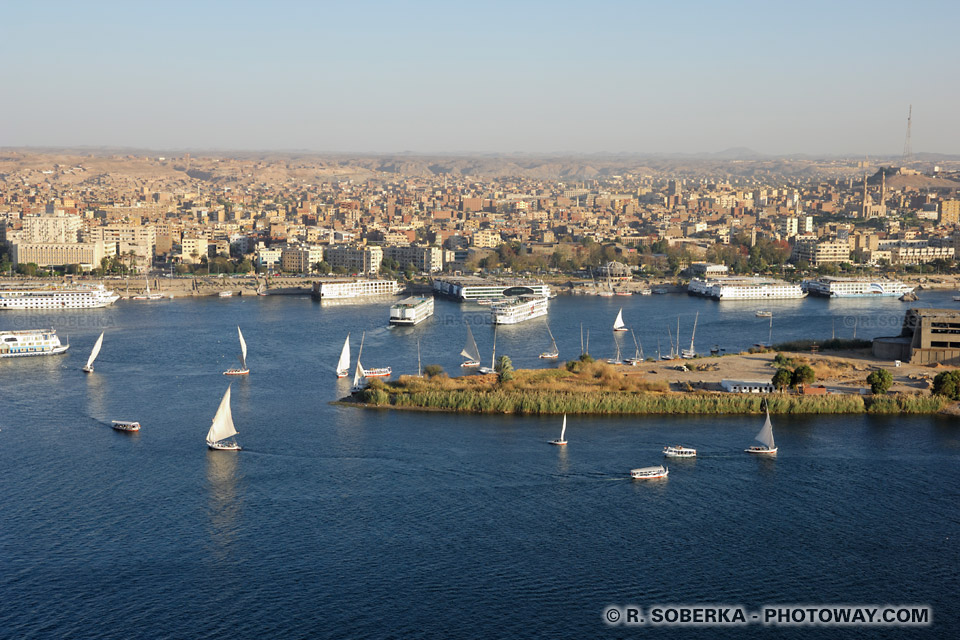
At the gateway to sub-Saharan Africa and Nubia, Aswan is located at the southernmost end of the navigable part of the Nile.
It is also the perfect starting point for exploring iconic sites such as the Temple of Philae and Abu Simbel.
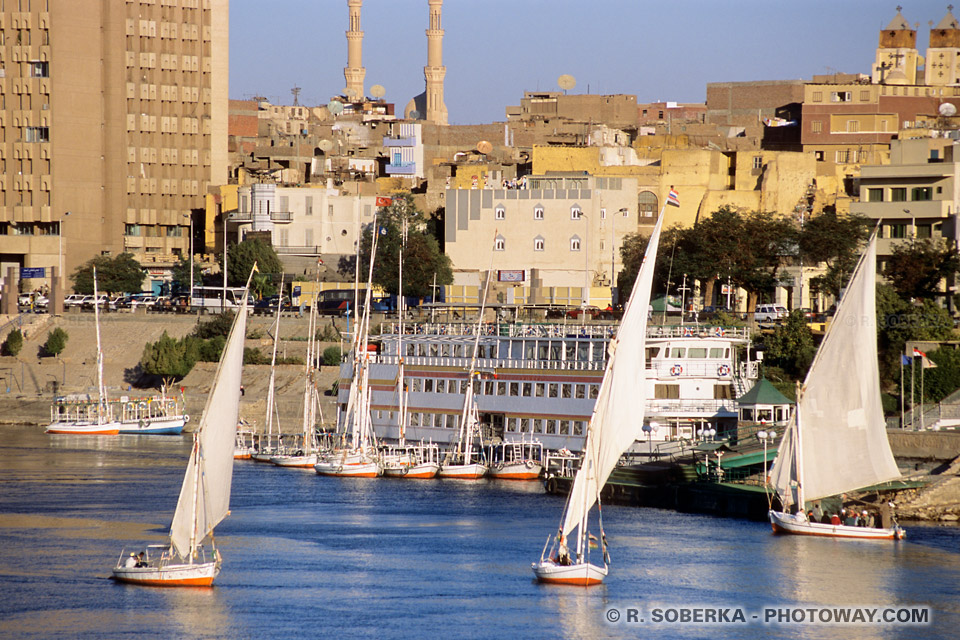
Aswan is also renowned for its charming feluccas.
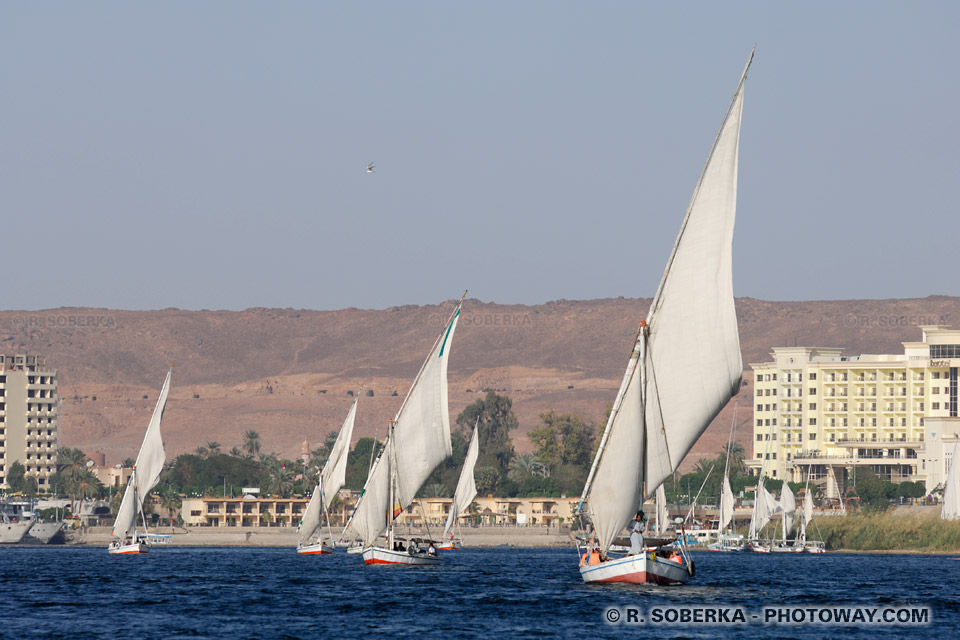
Feluccas are graceful traditional Egyptian boats, long and narrow, commonly seen on the Nile, especially in Aswan.
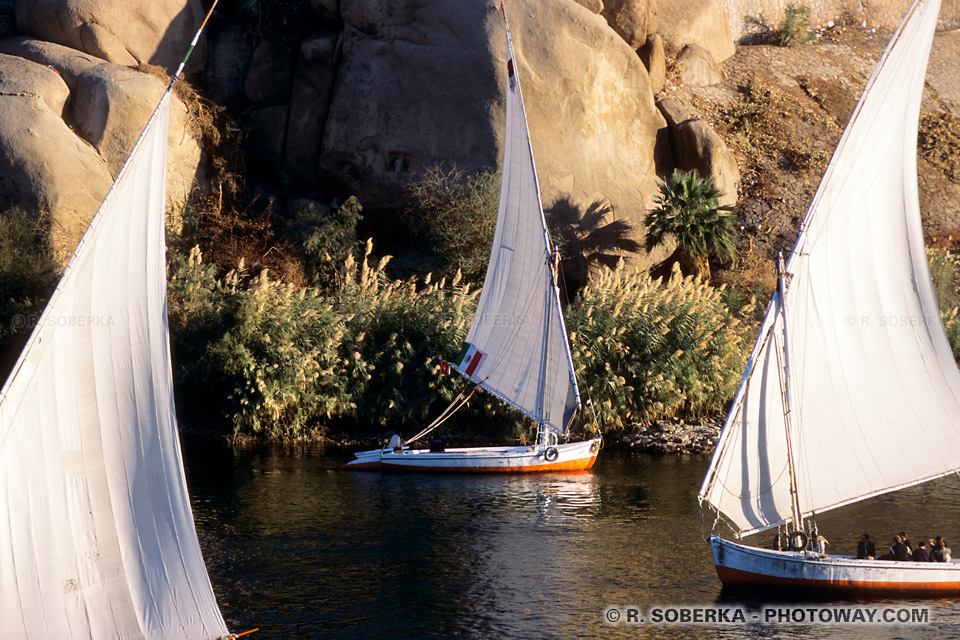
With their wooden hulls and white triangular sails, feluccas are perfect for gliding over the calm waters of the Nile, offering an authentic experience.
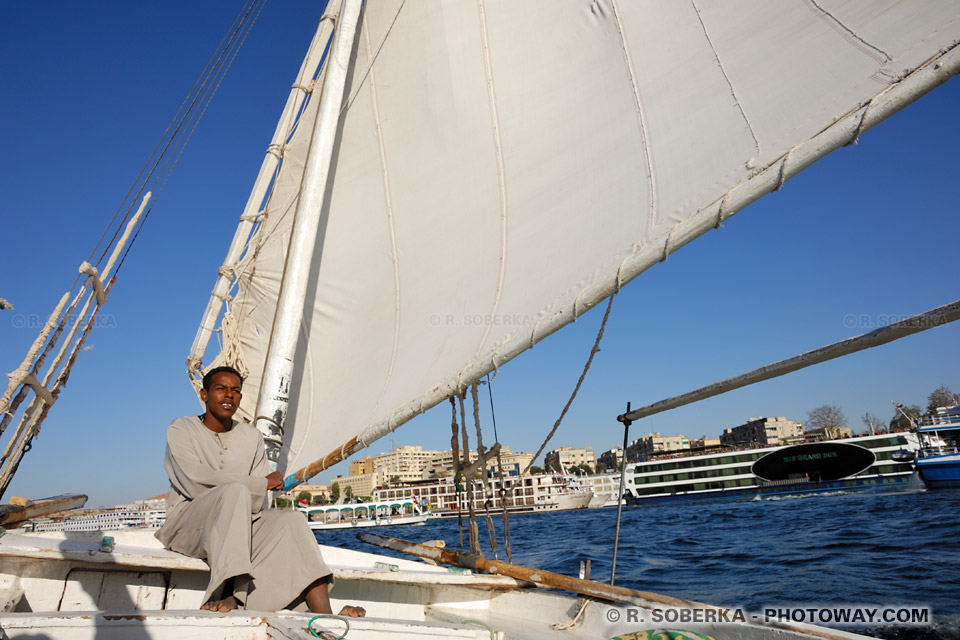
For about 1,000 Egyptian pounds ($22), you can enjoy a private felucca cruise...
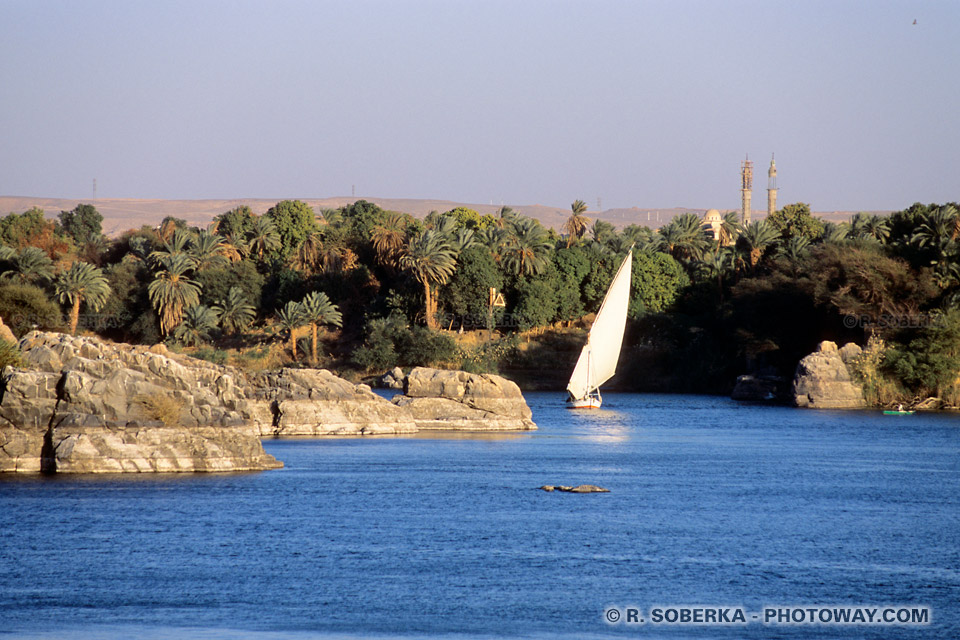
These boats, still operated manually, allow visitors to explore the surroundings of Aswan, such as Elephantine Island.

At the end of the day, gliding on the Nile aboard a felucca, facing the golden dunes, is an unforgettable experience.
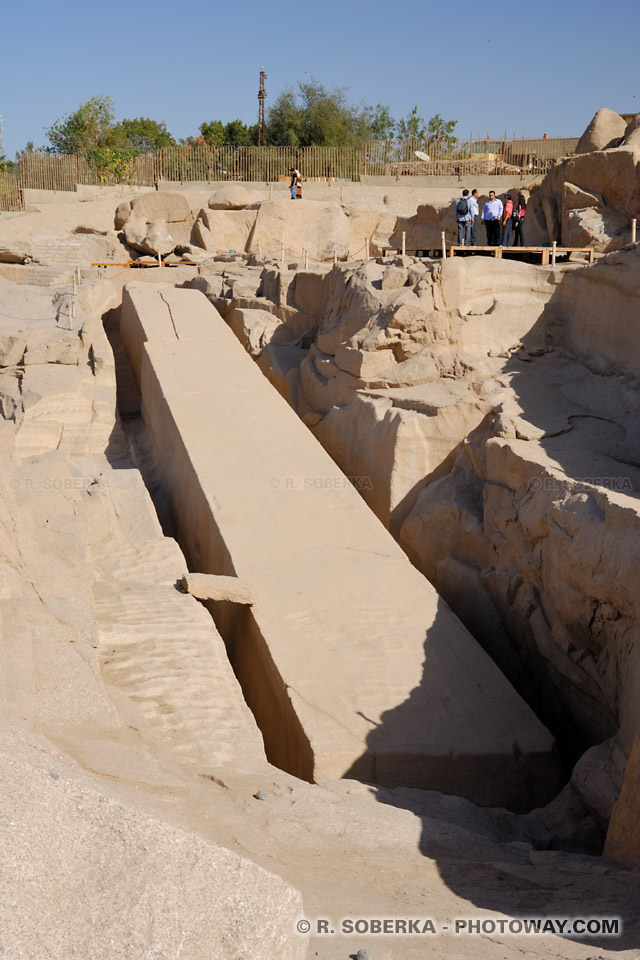
Back to the city of Aswan itself...
The city center offers few points of interest, except perhaps to the north, where the famous Unfinished Obelisk rests in its quarry.
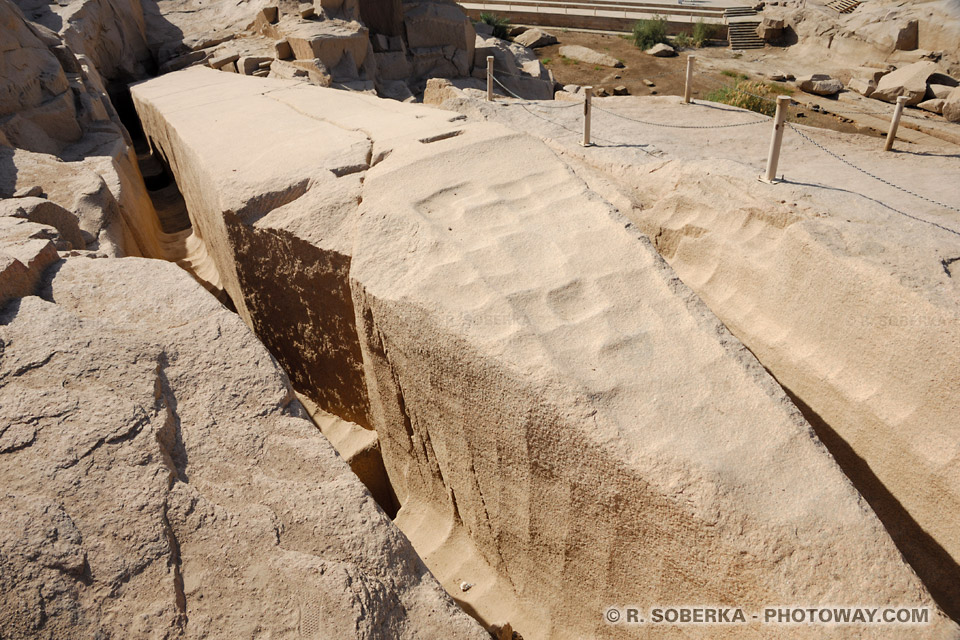
Weighing approximately 1,323 US tons (1,200 metric tonnes), this obelisk would have reached over 115 feet (35 meters) in height if it had been completed.
Still partially carved in the granite quarry, it perfectly illustrates the techniques of the ancient Egyptians for working stone.
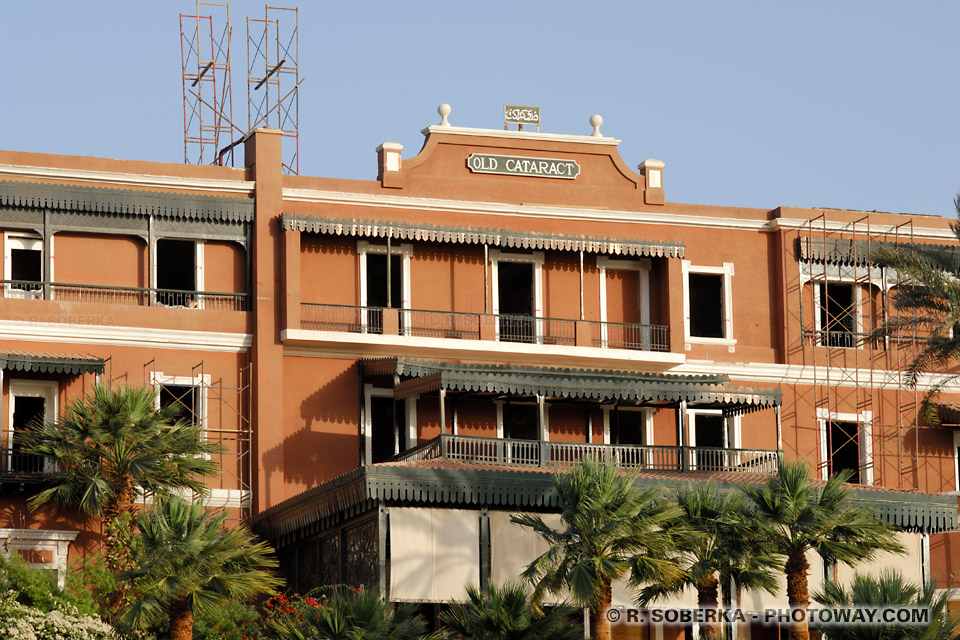
Another highlight in Aswan is the Old Cataract Hotel, which was under renovation during my visit in 2010 but has since been fully restored.
The Old Cataract Hotel is a historic luxury hotel overlooking the Nile, built in 1899 during the British colonial era.
Famous for its timeless charm, it has hosted many prestigious guests over the years.
Among them was Agatha Christie, who wrote part of her novel "Death on the Nile" during her stay!
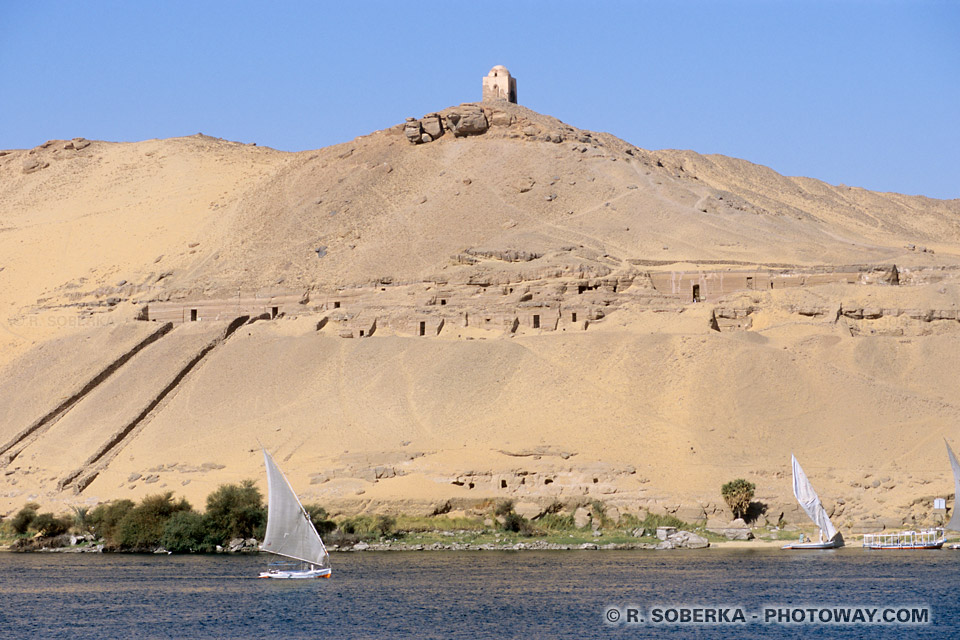
Across from the modern city, on the west bank of the Nile, lies another historic site: the Tombs of the Nobles, also known as the Tombs of the Princes of Elephantine Island.
These tombs house the burial sites of local governors, priests, and high-ranking dignitaries who managed the region of Elephantine Island.
These notable figures were sometimes referred to as "princes" due to their local authority.
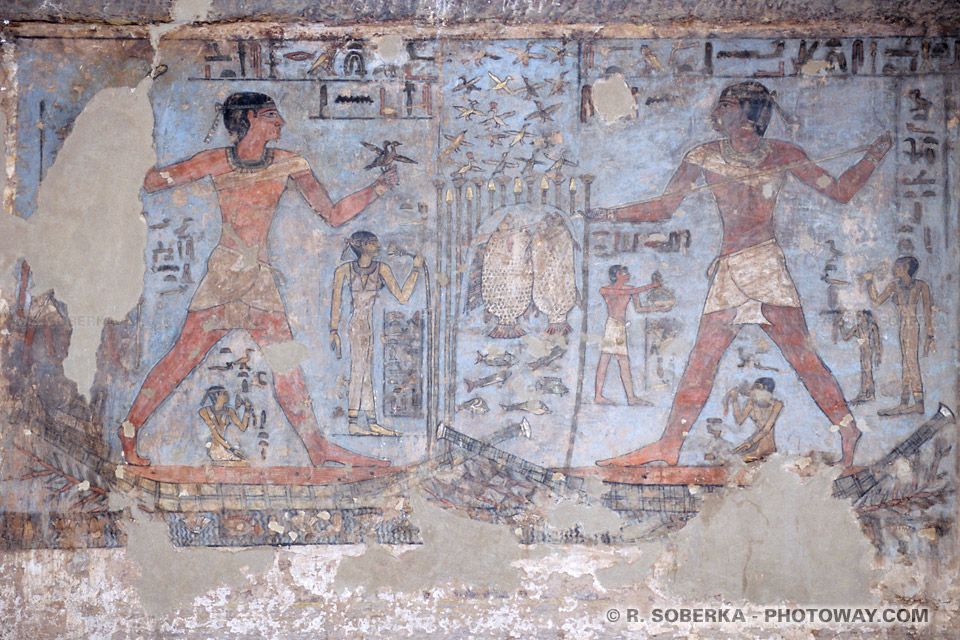
After 4,000 years, the tombs of these high-ranking dignitaries have retained some of their colors!
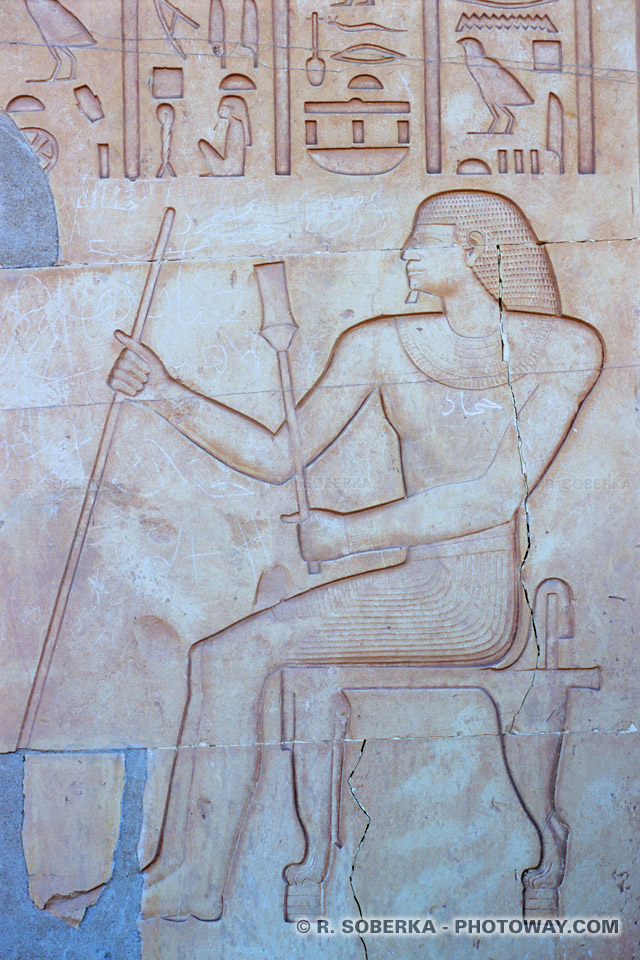
Delicate bas-reliefs can also be found adorning some of the exterior facades of the Tombs of the Nobles.
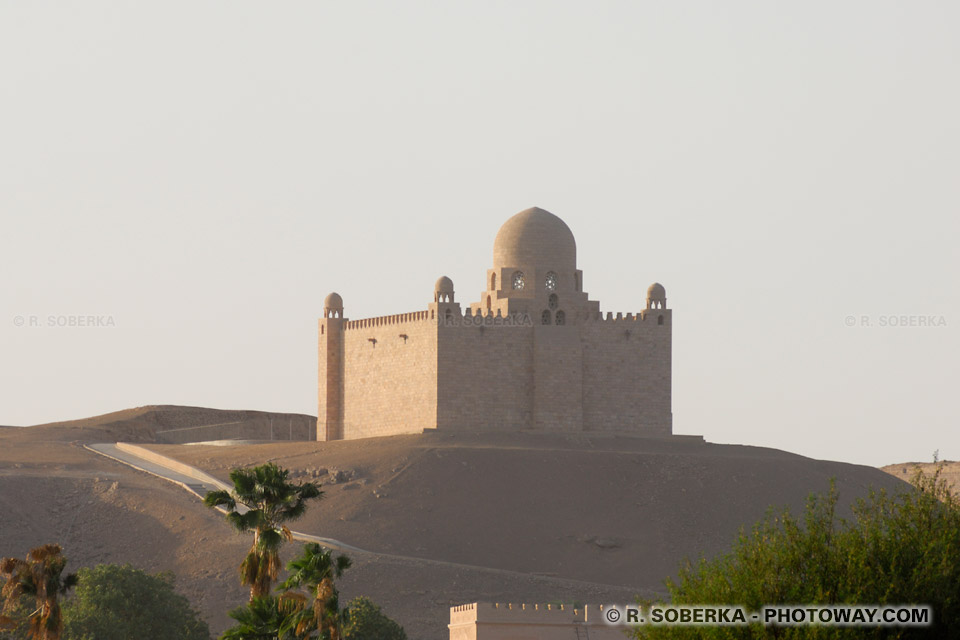
Also on the west bank of the Nile: the Aga Khan Mausoleum.
Perched on a hill overlooking the Nile, the Aga Khan Mausoleum is a stunning example of Islamic architecture.
Built in 1957, it houses the tomb of Aga Khan III, the 48th imam of the Ismaili Muslims.
Made of pink granite with a distinctive dome, the structure blends harmoniously into the desert landscape.
Although the interior is closed to visitors, the site offers spectacular views of the Nile and remains a must-see attraction in Aswan.
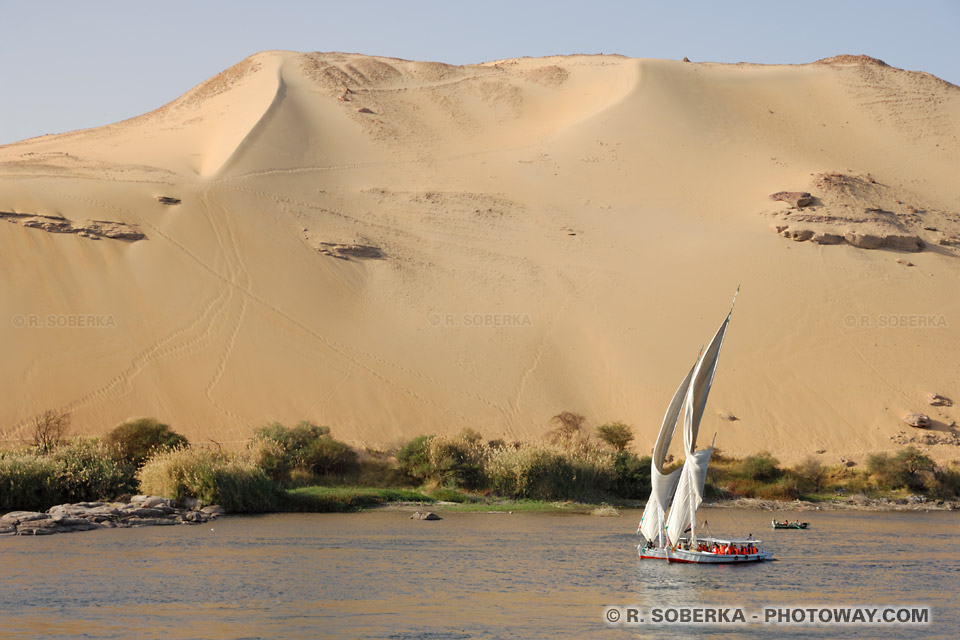
Near the Aga Khan Mausoleum, the west bank of the Nile is lined with a vast dune of fine sand.
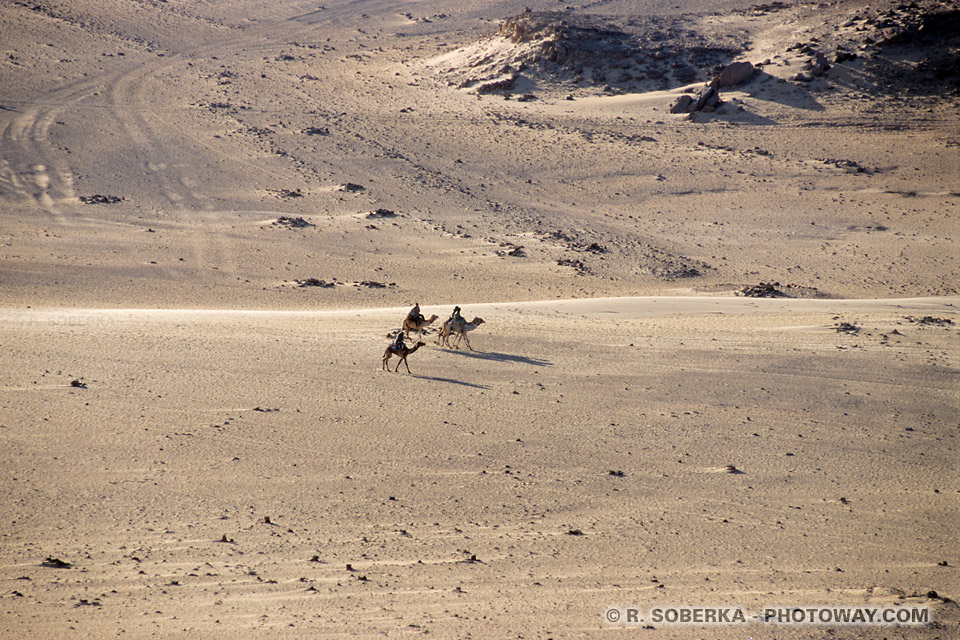
Beyond the dune lies the Libyan Desert, which is part of the Sahara.
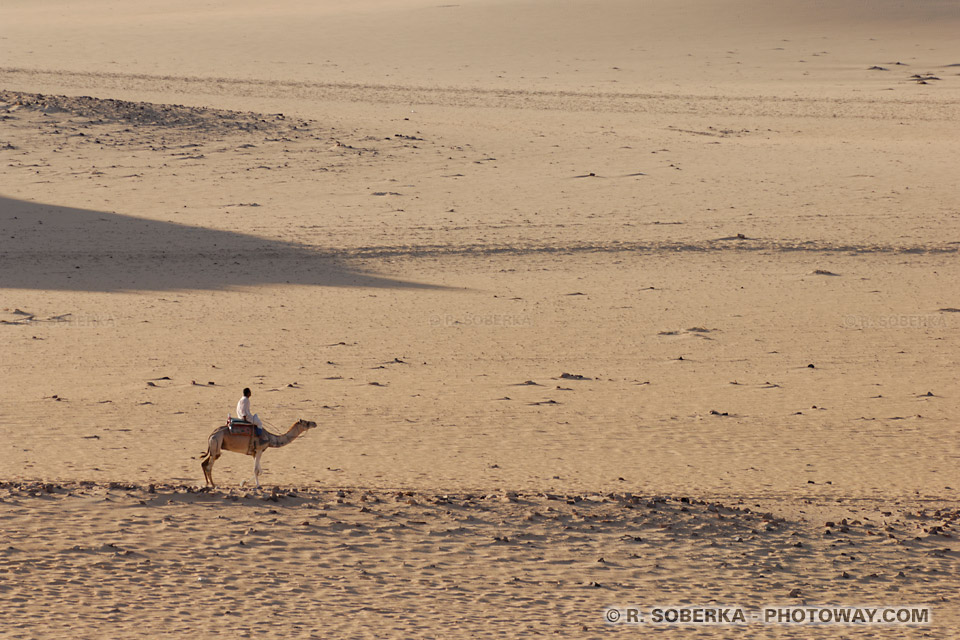
Dromedaries are certainly the best means of transportation for crossing the dunes of this arid desert!
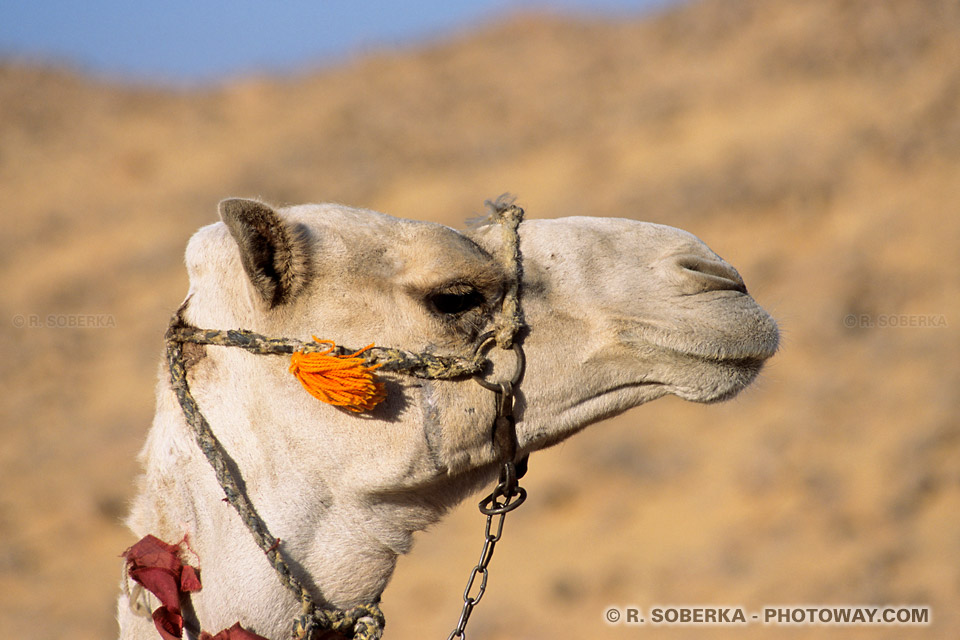
As you get closer, you'll come across a camel with a proud profile...

...or simply a friendly dromedary.
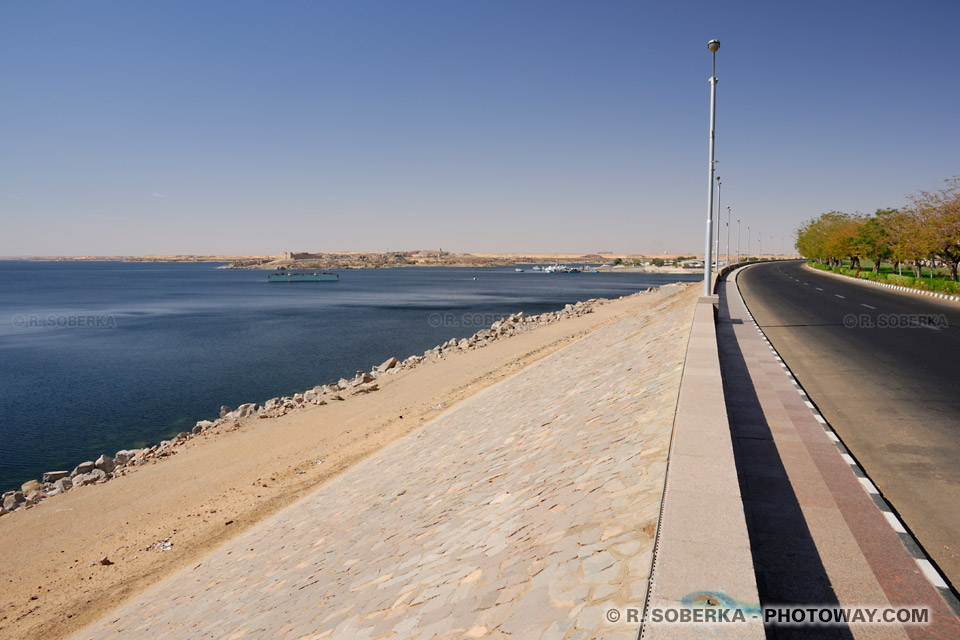
Aswan is also known for its famous dam.
In reality, the Aswan High Dam, located about 6 miles (10 kilometers) from the city center, is not particularly spectacular.
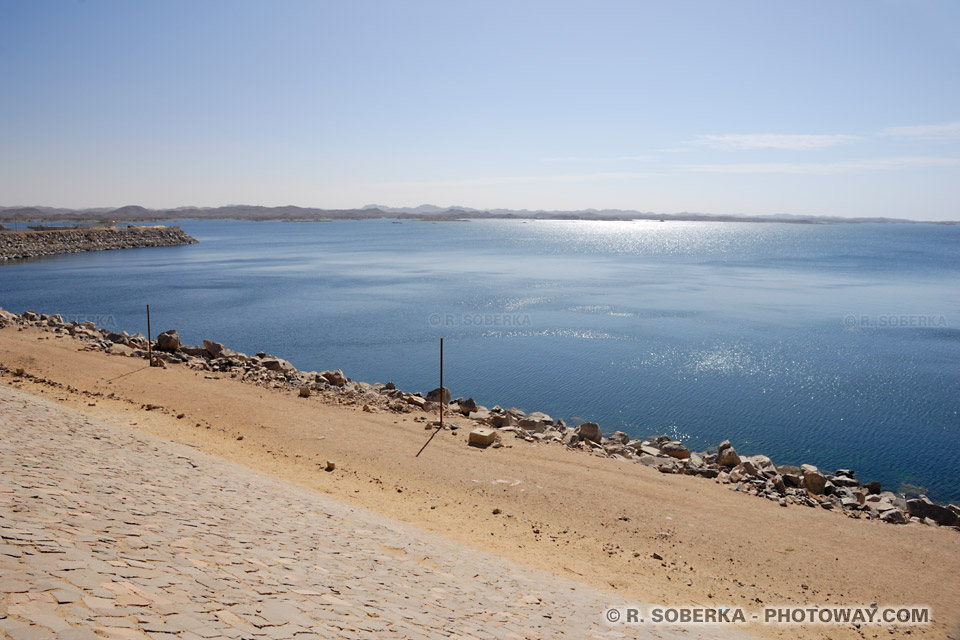
It is a massive embankment designed to retain and regulate the waters of Lake Nasser.
All photos of Aswan © 2002 and 2010 by Richard Soberka